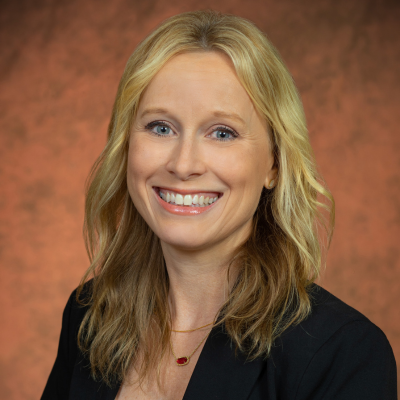Unlocking Longevity with Mia Newlin-Bradner: The Lifestyle Medicine Approach for Aging Well

By Victoria Simon
In the pursuit of aging gracefully, Lifestyle Medicine (LM) has emerged as a transformative paradigm, redefining how we approach health in later years. We interviewed Mia Newlin-Bradner, PhD, RN, MSN , an ISL Faculty Affiliate and Teaching Faculty II in the College of Nursing at Florida State University, who informed us of the profound impact Lifestyle Medicine has on promoting longevity and enhancing the overall well-being of older adults. We spoke with Dr. Newlin-Bradner after she returned from the 2023 Lifestyle Medicine conference hosted by the American College of Lifestyle Medicine in Denver, Colorado from October 29th – November 1st, 2023. There, she grew her knowledge on LM and how it pertains to successful longevity.
Dr. Newlin-Bradner explains that Lifestyle Medicine is a holistic strategy that transcends the conventional symptom-focused approach. It delves into the root causes of chronic diseases that often accompany aging. Grounded in evidence-based therapeutic methods, such as adopting a predominantly plant-based diet, regular physical activity, sufficient sleep, stress management, and steering clear of risky substances, LM is designed not only to treat but also to reverse and prevent chronic diseases.
We were curious to know what LM means at its core, and Dr. Newlin-Bradner taught me about the six pillars which unite to support the LM way of living. LM rests on six foundational pillars, each contributing to an enhanced quality of life. These pillars include the promotion of increased physical activity, the adoption of a healthful diet, improvement of sleep patterns, stress management, avoidance of risky substances, and the cultivation of social connectedness. While all pillars play a vital role, Dr. Newlin-Bradner tells us that in her experience in working with older adults, the trifecta of social connectedness, a healthy diet, and increased physical activity takes center stage in promoting the well-being of older adults.
What sets Lifestyle Medicine apart from traditional approaches to healthcare is its collaborative approach to healthcare. Unlike traditional medicine, which often positions healthcare providers as experts providing solutions to problems, LM practitioners see themselves as partners or coaches working with patients. This collaborative model empowers individuals to actively engage in their health journey, fostering a proactive view towards longevity.
The link between lifestyle factors and positive aging outcomes has been proven with research. Dr. Newlin-Bradner showed us that studies consistently show that embracing a healthy lifestyle, encompassing habits like not smoking, limited alcohol consumption, and increased physical activity, not only extends overall life expectancy but also increases active life expectancy without difficulties in daily activities (1).
In practical terms, Lifestyle Medicine encourages small, achievable changes that can yield lasting benefits. Dr. Newlin-Bradner stresses that small, doable changes can produce the most lasting benefits. Older adults looking to implement LM into their daily routine can start small, integrating a few extra minutes of physical activity like walking, gardening or low impact exercise like chair yoga, making mindful food choices as simple as swapping an unhealthy sweet for a nutrient dense fruit, or even nurturing relationships with neighbors or joining a local social club, to optimizing sleep habits by going to bed just a little earlier or waking up a little earlier. These changes form the cornerstone of a lifestyle focused on longevity and with these continued small changes comes big impact over time.
Beyond individual well-being, LM addresses broader societal challenges, particularly the epidemic of loneliness and isolation prevalent among older adults. Studies have proved that older populations, among others, are at the highest risk for loneliness and isolation (2). Recognizing the core human need for social connection, Lifestyle Medicine actively promotes behavioral changes that meet this desire, offering a holistic solution to the multifaceted aspects of aging.
Dr. Newlin-Bradner explained that with any lifestyle change, there are barriers to overcome. She has found that challenges in adopting a longevity-focused lifestyle often extend beyond tangible obstacles, like physical limitations or financial insecurity. She has seen this firsthand working in cardiac rehabilitation and says that past habits and experiences, deeply ingrained over the years, can present significant barriers to conquer. Overcoming these challenges involves education and a personalized approach, gradually introducing and integrating healthier habits into individuals' lives. Dr. Newlin-Bradner thinks that healthcare providers should not only be educated on the efficacy of these interventions but also how they can be confidently recommended to and implemented in older adults who seek to add this change to their life. She has made it a current goal of hers as a nurse educator and she aims to expose our current and future healthcare providers to the importance of and the evidence for lifestyle medicine.
For those seeking guidance on integrating Lifestyle Medicine principles, resources are plentiful. The American College of Lifestyle Medicine provides a comprehensive platform, including a directory of certified LM providers and patient-centric materials. Additionally, consulting professionals specializing in the six pillars of LM—dietitians, exercise professionals, wellness coaches, and behavioral health experts—can offer personalized support.
In conclusion, Lifestyle Medicine emerges as a guiding light for aging well, offering a cohesive and collaborative approach to health. By embracing its principles, older adults can unlock the potential for a longer, healthier, and more fulfilling life. To find a LM clinician, go to https://lifestylemedicine.org or, to gain access to LM patient resources, visit https://lifestylemedicine.org/project/patient-resources/
This article was originally posted in the Institute For Successful Longevity Newsletter - November 2023

